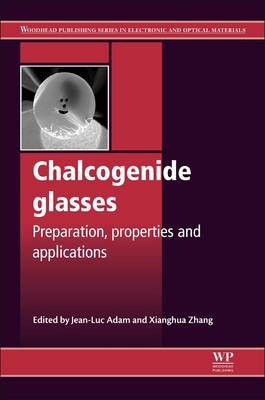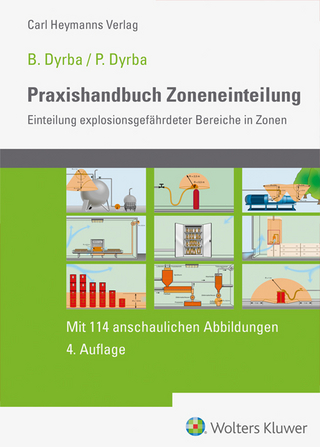
Chalcogenide Glasses
Woodhead Publishing Ltd (Verlag)
978-0-85709-345-5 (ISBN)
The unique properties and functionalities of chalcogenide glasses make them promising materials for photonic applications. Chalcogenide glasses are transparent from the visible to the near infrared region and can be moulded into lenses or drawn into fibres. They have useful commercial applications as components for lenses for infrared cameras, and chalcogenide glass fibres and optical components are used in waveguides for use with lasers, for optical switching, chemical and temperature sensing and phase change memories. Chalcogenide glasses comprehensively reviews the latest technological advances in this field and the industrial applications of the technology.
Part one outlines the preparation methods and properties of chalcogenide glasses, including the thermal properties, structure, and optical properties, before going on to discuss mean coordination and topological constraints in chalcogenide network glasses, and the photo-induced phenomena in chalcogenide glasses. This section also covers the ionic conductivity and physical aging of chalcogenide glasses, deposition techniques for chalcogenide thin films, and transparent chalcogenide glass-ceramics. Part two explores the applications of chalcogenide glasses. Topics discussed include rare-earth-doped chalcogenide glass for lasers and amplifiers, the applications of chalcogenide glasses for infrared sensing, microstructured optical fibres for infrared applications, and chalcogenide glass waveguide devices for all-optical signal processing. This section also discusses the control of light on the nanoscale with chalcogenide thin films, chalcogenide glass resists for lithography, and chalcogenide for phase change optical and electrical memories. The book concludes with an overview of chalcogenide glasses as electrolytes for batteries.
Chalcogenide glasses comprehensively reviews the latest technological advances and applications of chalcogenide glasses, and is an essential text for academics, materials scientists and electrical engineers working in the photonics and optoelectronics industry.
Dr Jean-Luc Adam is Director of Research at Centre National de la Recherche Scientifique (CNRS) and Director of the Institut des Sciences Chimiques de Rennes, France. Dr Xianghua Zhang is a Director of Research at Centre National de la Recherche Scientifique (CNRS) -Université de Rennes 1, France.
Contributor contact details
Woodhead Publishing Series in Electronic and Optical Materials
Part I: Preparation and properties of chalcogenide glasses
1: Preparation of high-purity chalcogenide glasses
Abstract:
1.1 Introduction
1.2 Preparation of vitreous chalcogenides
1.3 Properties of chalcogenide glasses determining their application as optical materials
1.4 Preparation of high-purity chalcogenide glasses
1.5 Preparation and characterization of chalcogenide optical fibers
1.6 Conclusion
2: Structure of chalcogenide glasses characterized by nuclear magnetic resonance (NMR) spectroscopy
Abstract:
2.1 Introduction
2.2 The 77Se nuclear magnetic resonance (NMR) spectroscopy in chalcogenide glasses
2.3 Other nuclei: 125Te, 75As, 73Ge, 71Ga
2.4 Conclusion
3: Mean coordination and topological constraints in chalcogenide network glasses
Abstract:
3.1 Introduction
3.2 Mean coordination and topological constraints: the rigidity percolation model
3.3 Applicability of the rigidity percolation model
3.4 The temperature dependence of constraints
3.5 Conclusion and future trends
4: Thermal properties of chalcogenide glasses
Abstract:
4.1 Introduction
4.2 Differential scanning calorimetry (DSC)
4.3 Thermogravimetric analysis (TGA)
4.4 Thermomechanical analysis (TMA)
4.5 Viscometry
4.6 Thermo-optic behavior
4.7 Conclusion and future trends
4.8 Sources of further information and advice
5: Optical properties of chalcogenide glasses and fibers
Abstract:
5.1 Introduction
5.2 Optical transmission theory
5.3 Impurity absorptions
5.4 Refractive index, dispersion and dn/dT
5.5 Transmission and laser power delivery of chalcogenide fibers
5.6 Current and future trends
5.7 Conclusion
6: Photo-induced phenomena in chalcogenide glasses
Abstract:
6.1 Introduction
6.2 Scalar changes
6.3 Enhancement and suppression of photodarkening
6.4 Excitation condition dependent scalar changes
6.5 Vector deformations
6.6 Conclusion
7: Ionic conductivity of chalcogenide glasses
Abstract:
7.1 Introduction
7.2 Preparation of ionic conductive chalcogenide glasses
7.3 Electrical and electrochemical characterisations
7.4 Conductivity versus composition
7.5 Direct current (dc) conductivity models
7.6 Frequency-dependent conductivity models
7.7 Applications
7.8 Conclusion
8: Physical ageing of chalcogenide glasses
Abstract:
8.1 Introduction
8.2 Experimental characterization of physical ageing in glasses using thermal analysis
8.3 Physical ageing effects in chalcogenide glasses
8.4 Phenomenological description of physical ageing
8.5 On the origin of physical ageing in chalcogenide glasses
8.6 Conclusion and future trends
9: Deposition techniques for chalcogenide thin films
Abstract:
9.1 Introduction
9.2 Thin-film deposition
9.3 Conclusion and future trends
9.4 Sources of further information and advice
9.5 Acknowledgements
10: Transparent chalcogenide glass-ceramics
Abstract:
10.1 Introduction
10.2 The recent history of chalcogenide glass-ceramics
10.3 Synthesis of transparent chalcogenide glass-ceramics
10.4 Properties of glass-ceramics
10.5 Future trends
10.6 Conclusion
Part II: Applications of chalcogenide glasses
11: Rare-earth-doped chalcogenide glass for lasers and amplifiers
Abstract:
11.1 Introduction
11.2 Rare-earth (RE)-doped chalcogenide glasses for optical fiber amplifiers
11.3 Local structure of RE ions
11.4 RE-doped chalcogenide glasses for mid-infrared lasers
11.5 Conclusion and future trends
12: Chalcogenide waveguides for infrared sensing
Abstract:
12.1 Introduction
12.2 Fiber evanescent wave spectroscopy
12.3 Fabrication of the fiber sensor
12.4 Characterization and optimization of the sensor
12.5 Applications of the sensor
12.6 Spatial area
12.7 Conclusion
13: Chalcogenide microstructured optical fibers for infrared applications
Abstract:
13.1 Introduction
13.2 General principles of microstructured optical fibers
13.3 Elaboration of chalcogenide microstructured optical fibers
13.4 Optical properties
13.5 Nonlinear optical properties
13.6 Conclusion
14: Chalcogenide glass waveguide devices for all-optical signal processing
Abstract:
14.1 Introduction
14.2 Stimulated Brillouin scattering (SBS) based on-chip processing
14.3 On-chip processing using the Kerr effect
14.4 Conclusion
15: Controlling light on the nanoscale with chalcogenide thin films
Abstract:
15.1 Introduction
15.2 Chalcogenide-based active elements
15.3 Nanoscale switches
15.4 Modelled phase change functionality in metamaterials
15.5 Electro-optic switches
15.6 All-optical switches
15.7 Conclusion
16: Second harmonic generation in chalcogenide glasses
Abstract:
16.1 Introduction
16.2 General principles for the generation of second-order nonlinear optical effects in glasses
16.3 Second harmonic generation (SHG) in glasses: origin and mechanism
16.4 Optical waveguide for electro-optic effects and quasi-phase matching second harmonic generation (QPM-SHG) in glass
16.5 SHG in chalcogenide glasses: induced polarization by external stimulation
16.6 Thermal poling in chalcogenide glasses
16.7 Glass-ceramic samples
16.8 Infrared (IR) stimulated processes in chalcogenide glasses
16.9 Conclusion
17: Chalcogenide glass resists for lithography
Abstract:
17.1 Introduction
17.2 Resist materials for lithography
17.3 Basics of chalcogenide glass resists
17.4 Examples of chalcogenide resist applications
17.5 Advantages and disadvantages of chalcogenide resists
17.6 Conclusion and future trends
17.7 Acknowledgements
18: Chalcogenide for phase change optical and electrical memories
Abstract:
18.1 Introduction: the basics of rewritable phase change data storage
18.2 Crystal nucleation in chalcogenide Ge2Sb2Te5 alloys: application to optical memories
18.3 Stability of very thin amorphous chalcogenide layers
18.4 Influence of nitrogen on GeTe crystallization ability: application to embedded electrical memories
18.5 Conclusion
19: Chalcogenide glasses as electrolytes for batteries
Abstract:
19.1 Introduction
19.2 Advantages of sulfide glasses as solid electrolytes
19.3 Development of sulfide electrolytes for battery application
19.4 All-solid-state lithium secondary batteries with sulfide electrolytes
19.5 Conclusion
Index
| Reihe/Serie | Woodhead Publishing Series in Electronic and Optical Materials |
|---|---|
| Verlagsort | Cambridge |
| Sprache | englisch |
| Maße | 156 x 234 mm |
| Gewicht | 1190 g |
| Themenwelt | Technik |
| ISBN-10 | 0-85709-345-2 / 0857093452 |
| ISBN-13 | 978-0-85709-345-5 / 9780857093455 |
| Zustand | Neuware |
| Haben Sie eine Frage zum Produkt? |
aus dem Bereich


